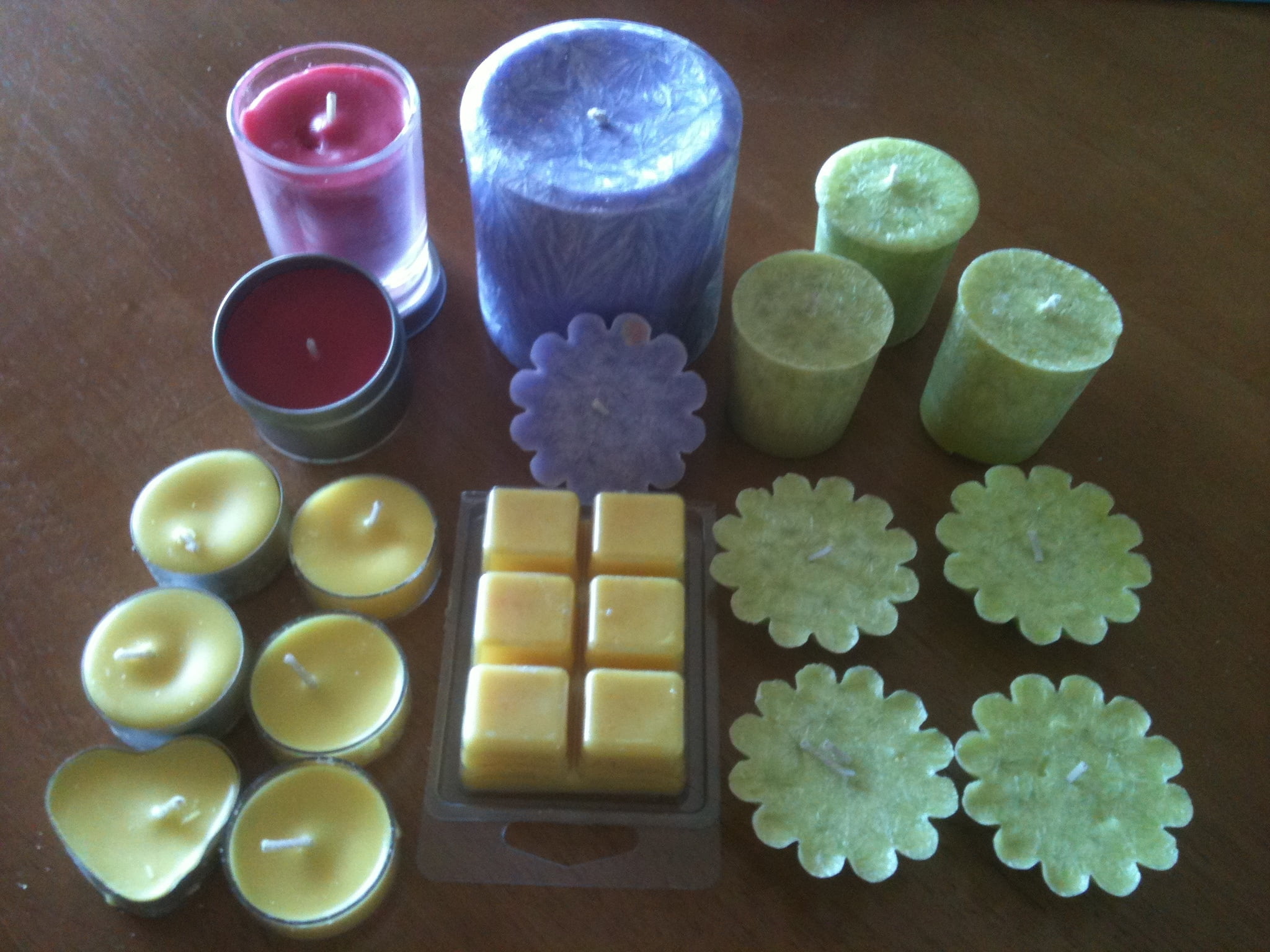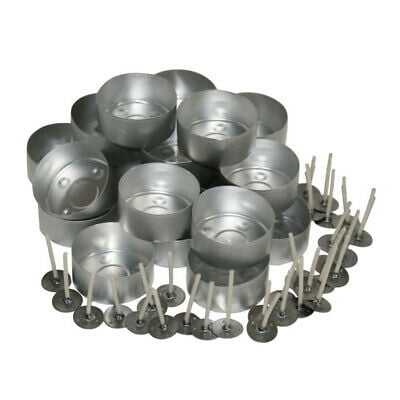Are you interested in learning the art of candle and soap making, but not sure where to start? Look no further. This introductory guide is designed for beginners who want to delve into the world of crafting their own candles and soaps. Whether you’re looking for a new hobby or hoping to create personalized gifts for friends and family, this article will provide you with the basic knowledge and practical skills needed to get started.
Before we dive into the nitty-gritty details of candle and soap making, it’s essential to understand that this guide is tailored for beginners or “dummies” in this craft. We’ll walk you through everything from choosing the right ingredients to troubleshooting common issues, ensuring that even the most inexperienced individuals can successfully create their own candles and soaps.
Throughout this article, we will explore how to select the appropriate materials, equipment, step-by-step guides for making your first candle and bar of soap, as well as safety precautions and best practices to ensure a pleasant and hazard-free crafting experience. By the end of this comprehensive guide, you’ll feel confident in your ability to embark on your own candle and soap making journey.
Choosing the Right Ingredients for Candle and Soap Making
When it comes to candle and soap making for dummies, it’s essential to choose the right ingredients to ensure a successful and high-quality end product. Here are some essential ingredients you’ll need to get started with your creations:
- Wax – The base of any candle, choosing the right wax is crucial. Whether you prefer paraffin wax, soy wax, or beeswax, each has its own characteristics and benefits.
- Fragrance Oils – To add a pleasant scent to your candles and soaps, fragrance oils come in a variety of scents and strengths. It’s important to choose high-quality oils that are specifically designed for candle and soap making.
- Additives – Depending on the type of candle or soap you want to make, additives such as color dyes, exfoliants for soaps, or UV inhibitors for candles may be necessary.
- Lye – Essential for soap making, lye is a key ingredient in creating the saponification process that turns oils into soap.
Once you have chosen your main ingredients, it’s important to source them from reputable suppliers to ensure their quality and safety. Additionally, consider any allergies or sensitivities when choosing fragrances and additives for your products.
When selecting ingredients for candle and soap making for dummies, always follow specific recipes and guidelines closely, especially if you’re new to the craft. Making substitutions without understanding how they will affect the final product can lead to disappointing results. With the right ingredients at hand, you’re ready to move on to the next step in creating your own beautiful candles and soaps.
Understanding the Basic Equipment Needed for Candle and Soap Making
When it comes to candle and soap making for dummies, having the right equipment is crucial for a successful and safe crafting experience. Here’s a breakdown of the basic equipment needed for both candle and soap making:
Candle Making Equipment
To begin with, you will need a double boiler or a dedicated wax melting pot to melt your candle wax. This helps to ensure that the wax melts evenly and at the right temperature.
In addition, you will need a thermometer to monitor the temperature of the wax, as well as a stirring utensil such as a metal spoon or spatula. For molding the candles, you’ll need molds in various shapes and sizes, as well as wicks and wick holders to keep them in place.
Soap Making Equipment
For soap making, it’s important to have a heat-resistant mixing bowl or pot for melting your soap base. You’ll also need a thermometer for monitoring the temperature of the melted soap base.
Additionally, having molds in different shapes and sizes is essential for creating your desired bar of soap. Other equipment includes stirring utensils like silicone spatulas or spoons, as well as a spray bottle filled with rubbing alcohol to eliminate air bubbles from forming in the soap.
Shared Equipment
There are some pieces of equipment that are commonly used for both candle and soap making, such as a scale for measuring ingredients by weight, and protective gear including gloves and safety goggles. Regardless of which craft you are pursuing, having these essentials on hand will set you up for successful candle and soap making adventures.
By understanding the basic equipment needed for candle and soap making, beginners can confidently embark on their crafting journey with the proper tools at their disposal.
Step-by-Step Guide to Making Your First Candle
Are you a beginner interested in the art of candle and soap making for dummies? Making your own candles can be a fun and rewarding hobby, and with the right guidance, even beginners can create beautiful and fragrant homemade candles. In this section, we will provide you with a step-by-step guide to making your very first candle.
Materials Needed
- Pouring pot or double boiler
- Candle wax (soy, paraffin, beeswax, etc.)
- Candle wicks
- Fragrance oil or essential oil (optional)
- Candle dye (optional)
- Thermometer
- Container or mold for the candle
- Stirring utensil (wooden stick or spoon)
Step 1: Prepare Your Workstation
Before you begin, make sure that your work area is clean and free from any clutter. Lay down some old newspapers or a protective covering on your work surface to avoid any spillage.
Step 2: Melt the Wax
Place the pouring pot or double boiler on the stove over medium heat. Add the desired amount of candle wax to the pot and allow it to melt completely, stirring occasionally with a wooden stick or spoon.
Remember that making candles requires patience and attention to detail. By following these steps, you can create your very first homemade candle without any hassle. Whether you want to make a scented decorative candle for your home or give them as personalized gifts to loved ones, learning how to make candles is an enjoyable endeavor worth exploring. Happy candle-making.
Step-by-Step Guide to Making Your First Bar of Soap
Making your first bar of soap can seem overwhelming, but with the right guidance and preparation, it can be a fun and rewarding experience. Before you begin, make sure you have all the necessary ingredients and equipment on hand. For this project, you will need a heat-resistant bowl, a digital scale, a thermometer, a stick blender, and soap molds.
Additionally, gather your chosen oils such as coconut oil, olive oil, and palm oil, as well as lye and water. Ensure that you are working in a well-ventilated area and have safety gear like gloves and goggles.
To start making your first bar of soap, carefully measure out the water in the heat-resistant bowl weighing it accurately using the digital scale. Then wearing your safety gear, slowly add lye to the water while stirring gently until it completely dissolves. Let the mixture cool to room temperature before moving on to the next step.
Once the lye solution has cooled down, it’s time to measure out your oils into another heat-resistant bowl. Heat the oils gently until they are fully liquefied and then let them cool to around 100°F (38°C). Once both mixtures have reached their respective temperatures combine them together while stirring continuously using a stick blender until trace is achieved.
Pour this mixture into your soap molds and cover them with a towel to retain the heat during saponification. After 24 hours have passed, you can remove the soap from its molds and let it cure for around 4 weeks before using it. Following these basic steps will help you create your very own batch of handmade soap.
Safety Precautions and Best Practices for Candle and Soap Making
When it comes to candle and soap making for dummies, safety should always be a top priority. Working with hot wax and lye can pose potential dangers, so it’s important to take the necessary precautions to ensure a safe and enjoyable crafting experience. Here’s a look at some of the key safety measures and best practices to keep in mind when delving into the world of candle and soap making.
Protective Gear
Before you begin your candle and soap making journey, be sure to invest in the proper protective gear. This includes wearing gloves, long sleeves, and safety goggles to protect your skin and eyes from potential splashes or spills of hot wax or lye.
Work in a Well-Ventilated Area
It’s essential to work in a well-ventilated area when making candles and soaps. Both candle-making fragrance oils and soap-making scents can emit strong fumes that can be harmful if inhaled in large amounts. Choose a workspace with good air circulation or use an exhaust fan to help disperse any fumes.
Handling Hot Materials
Whether you’re melting wax or mixing lye, always exercise caution when handling hot materials. Use appropriate heat-resistant containers and utensils, as well as heatproof surfaces for placing your tools and materials on. Additionally, be mindful of open flames from candle-making processes and keep flammable items away from your work area.
By following these safety precautions and best practices for candle and soap making, you can minimize risks and create a safe environment for your crafting endeavors. Remember that taking the time to prioritize safety will allow you to enjoy the creative process of making beautiful candles and soaps without worry.
Troubleshooting Common Issues in Candle and Soap Making
Even with the best preparation, candle and soap making for dummies can still encounter some common issues along the way. It’s important to be aware of these potential problems and know how to troubleshoot them effectively.
One common issue in candle making is uneven burning. This can be caused by using the wrong wick size for your candle or not allowing enough time for the wax to cool and set properly. To troubleshoot this issue, try using a larger wick size for a more even burn, or ensure that your candles are cooled in a draft-free area.
In soap making, one common issue is seizing, which happens when the soap mixture thickens suddenly and becomes difficult to pour into molds. This can be caused by adding fragrance oils or essential oils at too high of a temperature. To troubleshoot this issue, try mixing your fragrance oils at a cooler temperature or incorporating them more slowly into your soap mixture.
Another frequent issue in both candle and soap making is air bubbles forming in the finished product. This can detract from the overall appearance of your candles and soaps. To troubleshoot this problem, try tapping your mold gently on a hard surface to release any trapped air bubbles before the products fully set.
Overall, being aware of these common issues and knowing how to troubleshoot them will help you become a more successful candle and soap maker. Troubleshooting is an important skill to develop as you gain experience in this rewarding hobby.
| Issue | Troubleshooting Tips |
|---|---|
| Uneven Burning in Candles | Use a larger wick size or allow candles to cool properly |
| Seizing in Soap Making | Mix fragrance oils at cooler temperatures or add them more slowly |
| Air Bubbles in Finished Products | Tap molds gently on hard surfaces before products fully set |
Resources and Further Reading for Aspiring Candle and Soap Makers
In conclusion, candle and soap making for dummies is a rewarding and creative hobby that anyone can enjoy. With the right ingredients, equipment, and knowledge, it’s easy to get started on your journey to creating beautifully scented candles and luxurious bars of soap. By following the step-by-step guides provided, even beginners can successfully make their first candle or bar of soap with ease.
It’s important to remember that safety precautions are essential when working with hot wax and lye. By following best practices and being mindful of potential hazards, you can ensure a safe and enjoyable experience. Additionally, knowing how to troubleshoot common issues that may arise during the candle and soap making process will help you overcome any challenges and achieve the best possible results.
For those interested in delving deeper into the world of candle and soap making, there are numerous resources available for further reading. Whether it’s books, online tutorials, or workshops, aspiring makers can continue to expand their knowledge and perfect their craft.
With dedication and practice, anyone can become proficient in the art of candle and soap making, creating personalized products for themselves or as thoughtful gifts for others. So don’t be intimidated by the prospect of trying something new – grab your supplies and start creating today.
Frequently Asked Questions
What Is Easier to Make Soap or Candles?
Making soap and candles both require specific skills and knowledge, but some may find making soap easier due to the minimal equipment and ingredients needed. However, it ultimately depends on individual preferences and expertise.
Is a Candle and Soap Business Profitable?
A candle and soap business can be profitable if there is a demand for unique or high-quality products. Success in this industry requires effective marketing, product innovation, and a good understanding of the target market.
What Do You Call Someone Who Makes Soap and Candles?
Someone who makes soap and candles can be referred to as an artisan, crafter, or entrepreneur. They may also be called a chandler, which historically referred specifically to candle makers, but now encompasses both soap and candle making.

Welcome to my candle making blog! In this blog, I will be sharing my tips and tricks for making candles. I will also be sharing some of my favorite recipes.





